
Für eine deutsche Übersetzung dieser Seite einfach die Brandenburger Flagge anklicken
 |
Click the Brandenburg Flag for a German translation Für eine deutsche Übersetzung dieser Seite einfach die Brandenburger Flagge anklicken |


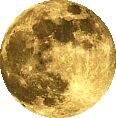 |
Road Trip March 2009Lick Observatory, CaliforniaLick Telescope |

|


 |
This site is part of our visit to Lick Observatory. Click the left turn sign to get back to the start page or the U-turn sign to get back to the road trips page. |

|

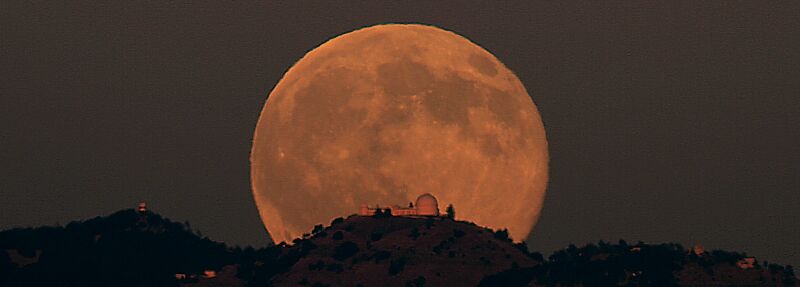 Moonrise at Lick Observatory on top of Mt. Hamilton in a picture borrowed from NASA's Jet Propulsion Lab.
Moonrise at Lick Observatory on top of Mt. Hamilton in a picture borrowed from NASA's Jet Propulsion Lab.
|

The Great Lick Telescope is one of America's oldest telescopes. When it was
finished in 1887, it also was the world's largest one. Only five years into to the life of the telescope, in 1892, astronomer
E. E. Barnard discovered
Amalthea, a moon in orbit of
Jupiter. Today , moons are not a big deal; we know over 300 in our solar system and 63 of them orbit Jupiter. But at the time of Barnard's discovery, only 20 moons were
known and Amalthea was the first Jupiter Moon discovered in 282 years, ever since Galileo used his first telescope in 1610.
 Today, the Lick Telescope still works as well as it did 120 years ago. It still doesn't use any computer technology, meaning all coordinates have to be entered manually and then the telescope's hydraulic system rotates the dome, adjust the angel of the telescope and raises or lowers the floor to bring the observer within convenient reach of the eye end of the telescope. A mechanical clockwork adjusts for the Earth's rotation as it did more than a century ago.  Again, we are not going to bore you with the entire history of the place, but if you are interested in details, you can check it out at Wikipedia.  XXXXXXXXXXXXXXXXXXXXXXXXXXXXXX>Lick Telescope in 1889 (from Wikipedia) |
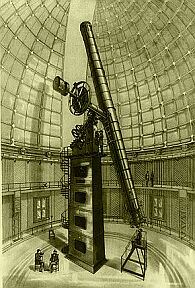
|

|
Of all the discoveries done here, the one we found most interesting was that of near earth asteroid
1950DA, which has been classified as the asteroid with the highest known
probability of impacting Earth. But don't worry, it is not going to happen until sometime in 2880. Below are two pictures of what the telescope looks like today. |

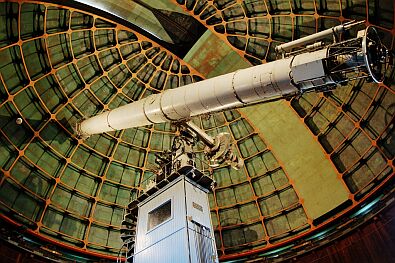 |
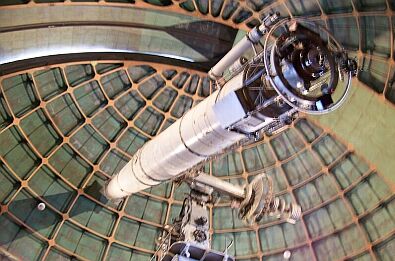 |
| Picture published at Wikipedia - taken with professional equipment | Picture taken without artificial light sources with a Kodak camera that Volker tried to hold steady for 2.5 seconds. |


The Main Complex |
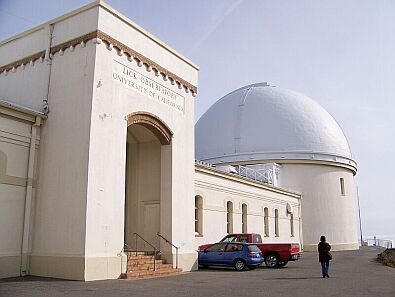 XXXXXXXXXX>Lick Observatory, main building
XXXXXXXXXX>Lick Observatory, main building |
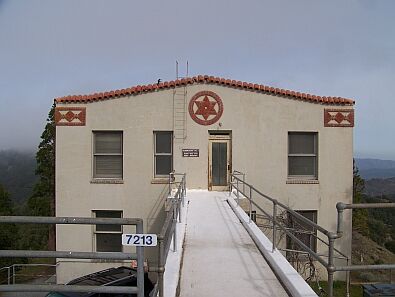 Lick Observatory, astronomer's dormitoryXXXXXXX>
Lick Observatory, astronomer's dormitoryXXXXXXX> |

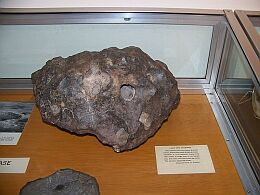 |
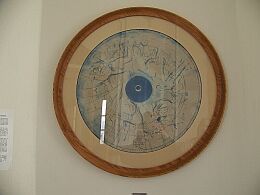 |
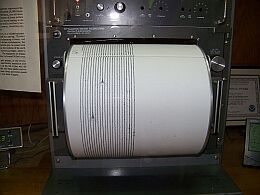
|
| Meteor at the observatory's exhibition |
Original seismographic recording of the 1906 San Francisco earthquake |
Modern seismograph (it recorded two little earth quakes somewhere the day we visited.) |
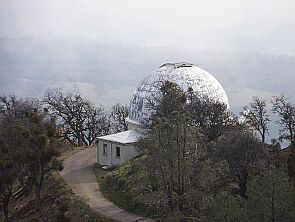 |
There is a lot more here: In the left picture you can see the Crossley Reflector, the second oldest instrument at the observatory. And then there was the smallest telescope on the hill (right picture), which proved totally useless in the fog. We also discovered a bench, dedicated to a very inspiring woman, a bust of the mountain's namesake and a really interesting picture gallery. Check out the last page of this trip! |
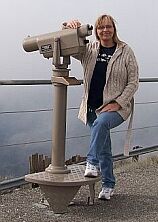
|

 |
Click the left turn sign to get back to the start page. Or click the right turn signal to move on to the rest of our pictures. |

|


 Back to Road Trip March 2009 |
 Back to Road Trips Main Page |
 Back to English Main Page |
 Back to Start Page |